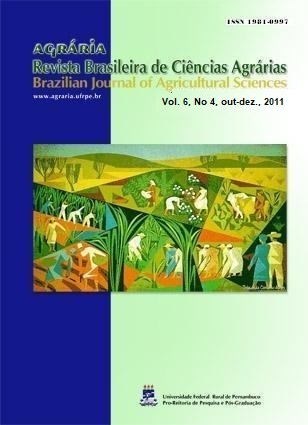Evaluation of the cultural practices on energy conversion and balance
DOI:
https://doi.org/10.5039/agraria.v6i4a1366Keywords:
Energy, no-tillage, crop rotationAbstract
Aiming at evaluating the effect of the cultural practices soil management and crop rotation on energy conversion and balance, an experiment was conducted in Passo Fundo, Rio Grande do Sul, Brazil, from 2004 to 2009. Four types of soil management were used: 1) no-tillage, 2) minimum tillage, 3) conventional tillage using disk plow, and 4) conventional tillage using moldboard plow and three crop rotation systems: system I - wheat/soybean; system II - wheat/soybean and common vetch/sorghum; and system III - wheat/soybean, common vetch/sorghum, and white oats/soybean. The experimental design was made with randomized blocks, with split-plots and three replications. The main plot consisted of the soil management systems, while the split-plots consisted of the crop rotation systems. Energy conversion (available energy/consumed energy) and balance (available energy - consumed energy) in a six-year period were discussed in this paper. The sorghum was the crop that showed the highest energy return in comparison to the other crops. The no-tillage system showed higher energy conversion and balance (15.27 and 42,391 Mcal ha-1) than the minimum tillage (12.82 and
35,217 Mcal ha-1) and the conventional tillage systems using disk plow (10.64 and 28.988 Mcal ha-1) and moldboard (10.55 and 28,698 Mcal ha-1). The wheat under crop rotation tended to be more energetically efficient than the monoculture of this cereal.



